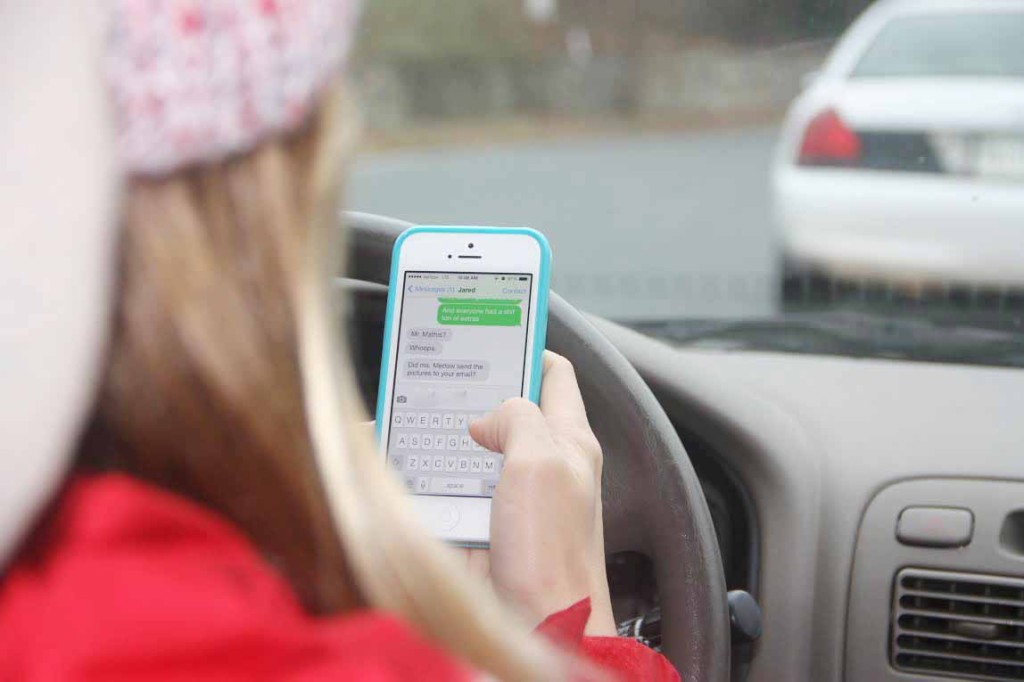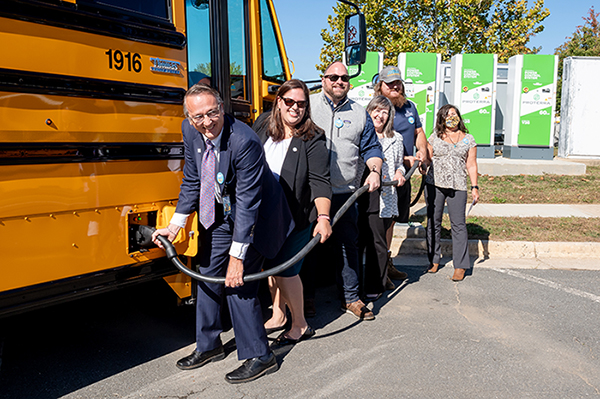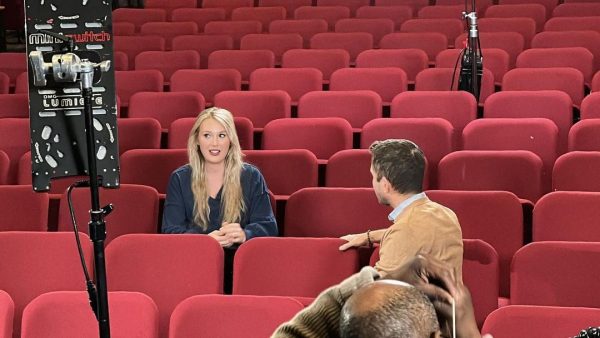Texting endangers students’ lives
Studies show teenagers take texting and driving warning seriously, but risk lives with friends
According to a poll at AHS, 44% of students said they had been in a car where the driver used a cell phone that put themselves or others in danger, which is less than the national average.
Much like the “birds and the bees,” every teenager has heard the “no texting and driving” talk. But despite hearing the warnings of the consequences of texting and driving, many students still admit to doing it.
AHS handed out 500 surveys to students, 400 of which were returned and counted. According to a survey conducted at AHS, 17% of students who drive admitted to texting and driving and 20% of all students surveyed believe it is okay to text while driving.
The idea that a car gives you invincibility is a nationwide trend. Teens everywhere think that they cannot be injured while behind the wheel of an automobile. Every day on the news there is another story of another teenager who was either killed or badly injured because they were texting while driving. AT&T has even started a national “It Can Wait” campaign to educate teenagers of the dangers of texting and driving.
About 1.4 million car crashes a year are caused by cell phone use, with an additional 200,000 caused by texting, according the National Safety Council. This shows that many drivers do not listen to federal warnings and still use electronics while operating a car. In turn, this leads to distracted driving, which kills about 3,328 of people annually, according to distraction.gov.
Distracted driving is not just texting and driving, distracted driving also involves talking on a cell phone. In 2011, 28% of all car crashes involved drivers using cell phones at the time of the accident. At AHS, 31% of students surveyed had talked on a cell phone while driving.
“Distracted driving, especially texting and driving is really dangerous. Even though your eyes are off the road for a moment a lot can happen and you can put people in danger,” sophomore Janan Gokturk said.
To obtain a license in the state of Virginia, students must take both the Driver’s Education classroom part and attend Parent-Teen Night at school to be eligible to receive the green card required to take the Behind the Wheel class. During both of these sessions, the topic of texting and driving is mentioned multiple times.
“We have a whole unit on distractions, and texting and driving is obviously a big part of that. I also try to mention it at the beginning, middle and end of the quarter,” drivers education teacher Pat Hughes said.
There is also a requirement that the student-driver complete 45 hours of driving with a parent in the car, 15 of which must be at night.
After successfully completing Behind the Wheel and the required hours, students must attend the State of Virginia licensing ceremony where they are required to watch another video about texting and driving. Then the license is handed to the students’ parents as a symbol that the license is a privilege and that the parents can take it away.
While many students understand that driving is a privilege, some don’t and believe they can do whatever they want while behind the wheel.
“It’s all about attitudes. some kids think they’ll be able to do it and get away with it,” Hughes said.
In a 2010 PEW Research study, about 33% of all teenagers with cell phones admitted to texting while driving. PEW, a Washington D.C. based think tank which provides credible research data. This differs from the student body of AHS, which has a percentage of only 17%. While about one-third of teenagers admit to texting while driving, about 49% of teens surveyed said that they had been in a car while the driver was texting, according to a 2010 PEW Research poll. At AHS, the average was much higher at 59% of all students who were surveyed.
This is dangerous not only because the driver is putting their self at risk, but also the passengers in their car. At AHS, 44% of all students surveyed said they had been in a car where the driver used a cell phone in a way that put themselves or others in danger. This is slightly lower than the national average of 48%.
“If I’m in the car with someone else when they’re driving usually I’ll just text for them,” Paletti said.
This is why the State of Virginia has created laws that make it illegal for new drivers to have more than one non-family passenger in their car for the first year of having their license. After the first year, the number of non-family passengers goes up to three until the driver turns 18. The law was created in hopes of creating less distraction for new drivers and preventing crashes.
“I think the laws are really helpful when people actually follow them,” Paletti said.
Despite these laws, 71% of AHS teens that fall under the category for having their license less than a year have admitted to either being in a car with someone who has used their cell phone to put themselves or others in danger, or admitted to texting while driving.
“When they [text and drive, they] are basically saying they are willing to hurt someone. We try to drive home that point- what you do in that car can negatively affect someone else,” Hughes said.
In our technological age, there are now also apps such as DriveSafe.ly, Textecution, and DriveScribe that can auto-respond to all texts you receive while driving. Textecution takes the app a step further and disables texting when you drive more than 10 mph, and the driver isn’t able to access their messages until they are going slower than 10 mph.
“Parents should take advantage of all [all the new technology]. Its hard to not pick up that thing with your generation,” Hughes said.
All of the apps mentioned are available on both the iTunes App Store and the Android Marketplace. To find more information about texting and driving, and ways to prevent teenagers from texting and driving, visit http://www.distraction.gov or http://www.itcanwait.com.

This is Bayley's second year on staff. Last year she was a staff writer, and she is currently the News editor. Bayley also participates on the Varsity...











